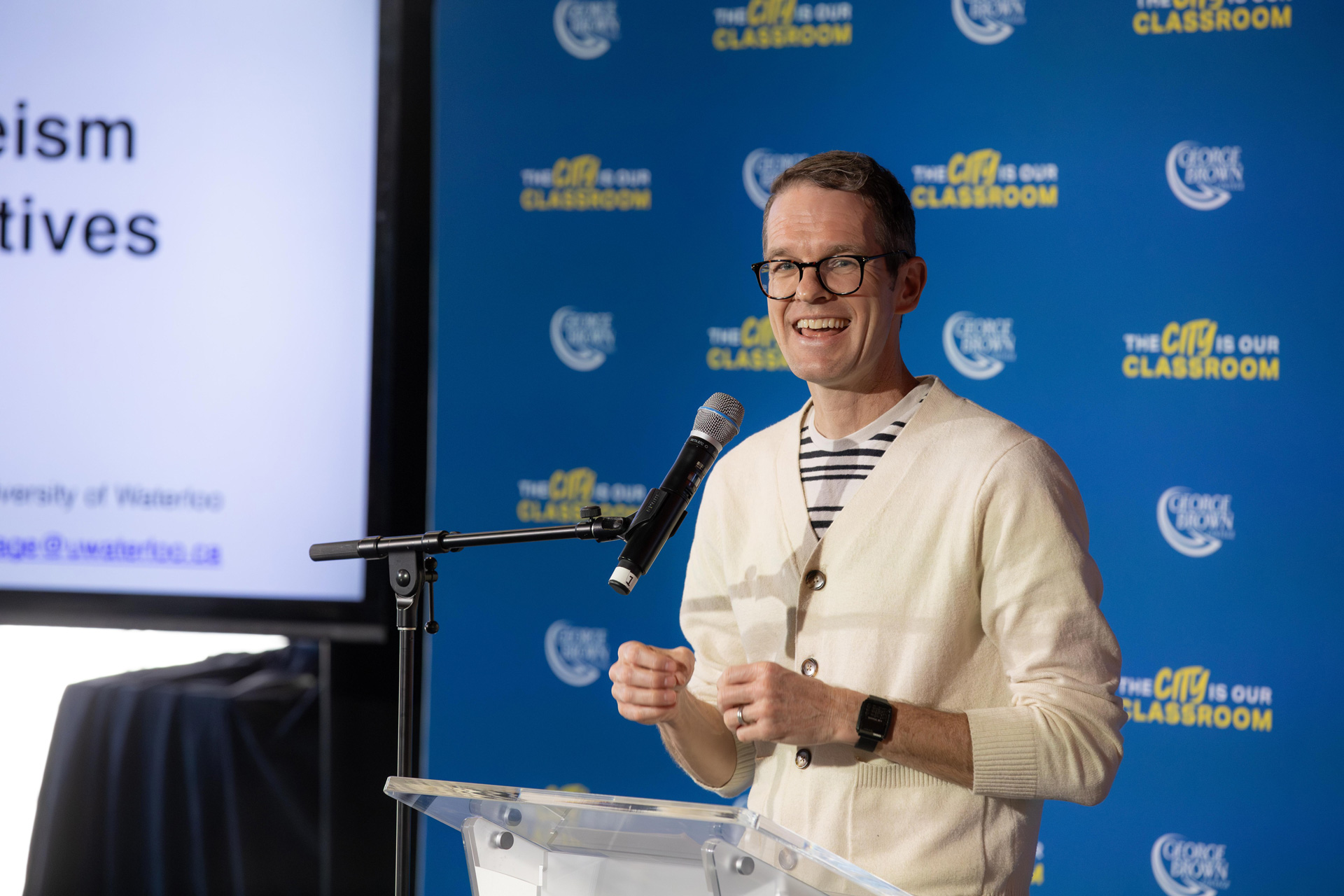Colleges and universities need to rethink how to include employees and students with disabilities in higher education, and that means not only making spaces accessible with ramps and push-button doors, but also ensuring employees and students with disabilities are empowered to fully participate in design processes for accessibility.
That was the message that Dr. Jay Dolmage, author of Academic Ableism: Disability and Higher Education, brought to George Brown College during his recent keynote address at the hybrid celebration of the International Day of Persons with Disabilities on December 3rd.
The event was jointly organized by George Brown College’s Office of Anti-Racism, Equity and Human Rights Services and Toronto Metropolitan University. GBC’s Manager of Accessibility, Inclusion and AODA Compliance, Yin Brown, developed a jam-packed program of thought leadership and discussion from faculty, staff, and students as well as a therapeutic dance workshop led by current GBC student Ishaa Chopra.
In his address, Dr. Dolmage said that post-secondary institutions must find ways for students, staff and faculty with disabilities to have more agency and voice in how equitable access is set up campuses, and urged a shift in the way people with disabilities are regarded. “The largest paradigm to understanding disabilities is that they are a problem to be fixed,” said Dr. Dolmage. “That doesn’t leave enough space to understand disability as a positive identity in the community.”
Dr. Dolmage noted that while post-secondary institutions make efforts to accommodate persons with disabilities and to provide assistance, those methods are often missing the mark. Students too often don’t seek that assistance out, even if they may have done so while attending elementary and secondary school.
Dr. Dolmage identified an unsustainable crisis around traditional accommodations based on a strictly medical and legal model of disability, a culture that considers disability as a deficit, and that asks disabled persons to prove their disability in order to be accommodated.
Dr. Dolmage’s advice – that colleges and universities design systems and structures with accessibility in mind from the beginning, engaging disabled persons to lead the conversation on universal design - was echoed by other participants in the afternoon event.
Watch the recording of the event. Please note that this video's American Sign Language (ASL) version will be available shortly.
Watch the recording of the Students with Disabilities Panel: Be Seen, Be Heard, and Valued
Faculty members from TMU and GBC participated in a panel discussion fleshing out some of the barriers they and their students have faced and continue to deal with, including the constant need to disclose and document disabilities in order to receive support – and the difficulty in communicating disabilities that may not be obvious.
Karen Kotorlis, an instructor in the Intervenor Program at George Brown College’s School of Social & Community Services who identifies as deafblind, said she has to deal with stereotypical assumptions of deafblind persons. She has tunnel vision and is sensitive to different light levels.
“When I’m working with an interpreter, they need to be closer. I may need to negotiate brightness or dimness – sometimes there is pushback (on multiple accommodations), with people saying, ‘we’ve already provided an interpreter.’”
Ghofran Alyass, an instructor in GBC’s School of Social & Community Services, described being asked for a doctor’s note while studying at another institution to prove she needed a wheelchair-accessible classroom. She refused, and then was accommodated, but said the interaction was saddening.
“Even when you disclose as a person with a visible or invisible disability, you’ll be questioned (and often not believed),” she said.
In his opening remarks, George Brown College President Dr. Gervan Fearon pledged on behalf of the college to empower, embrace and support students and employees no matter their ability.
Join us in improving GBC’s accessibility. Please share accessibility feedback and sign up for our monthly newsletter.
Discover more about our support for students, employees and visitors, including our multi-year accessibility plan: https://www.georgebrown.ca/media/accessibility-and-inclusion-multi-year-plan.









